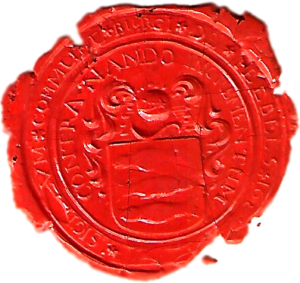Old Town (1876-1884), 31 High Street (1884-1890)
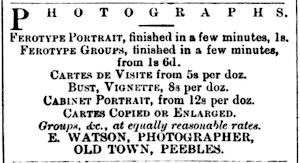
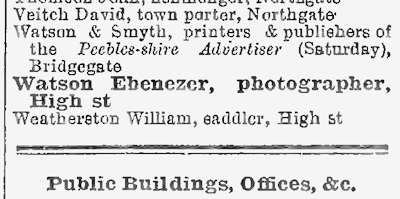
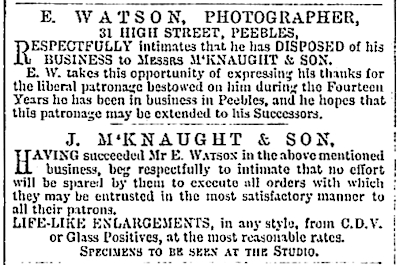
The Carte-De-Visite (CDV) became immensely popular in the 1860s. It was the first type of photograph that could be mass-produced, leading to its widespread popularity. Ebenezer Watson was undoubtably the pioneer of CsDV in Peebles. He traded initially from the Old Town, then later from the High Street. In 1890, the business was acquired by James McKnaught.
To learn more about the various processes involved in the making of CsDV,
skip to the foot of the page.

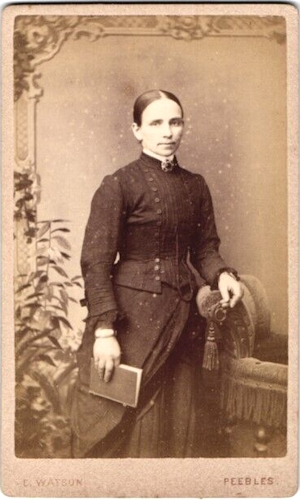

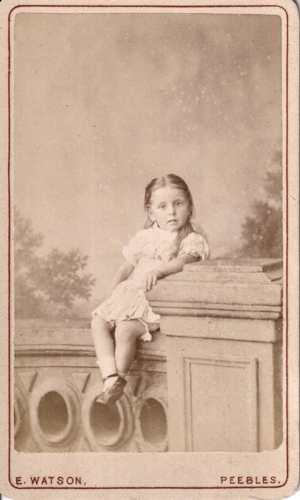


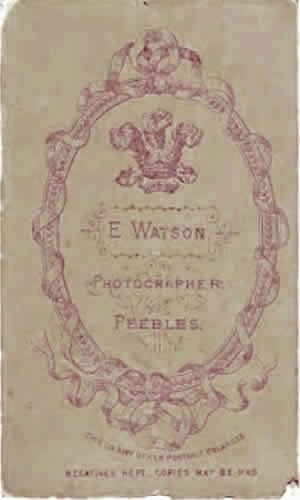
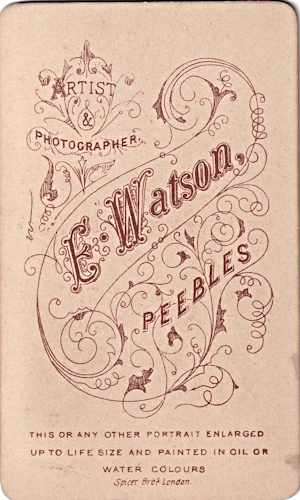
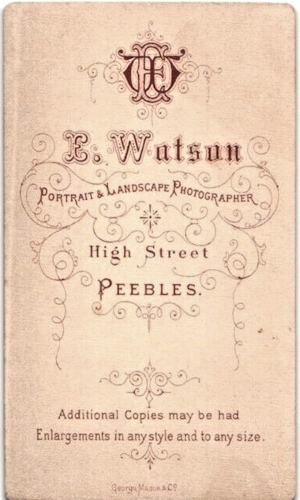
Decorative logo designs were routinely printed on the reverse side of early Cartes-De-Visite. The selection above features a rare appearance of full ‘Ebenezer Watson’ branding as opposed to the more familiar abbreviated form of ‘E. Watson’. The black-bordered mounts below are just plain black on the reverse, but make up for it on the front, with beautiful gold embossing to the chamfered edges and logo.
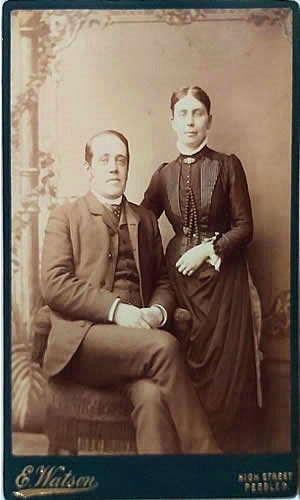
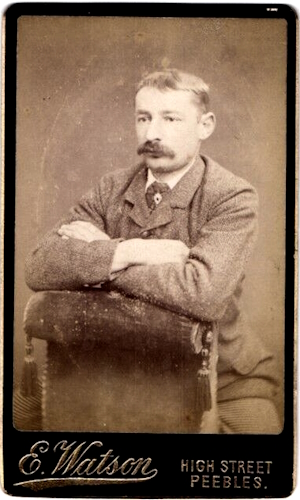
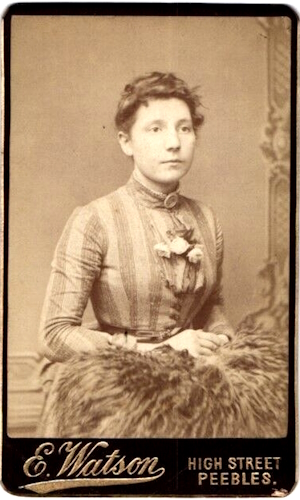

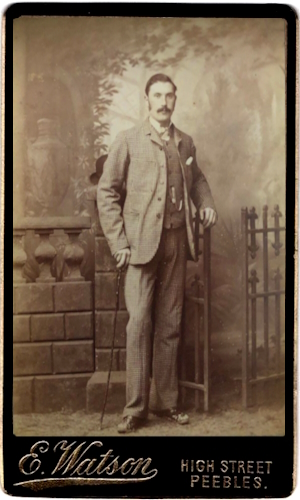
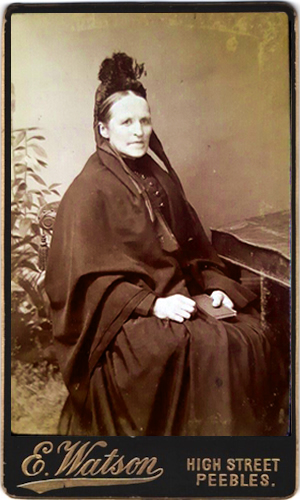
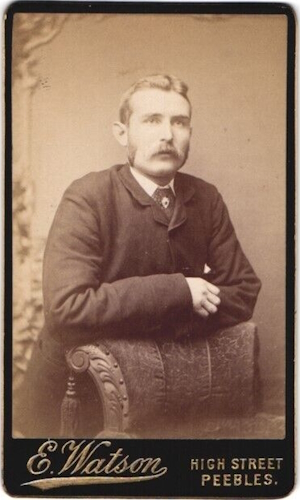
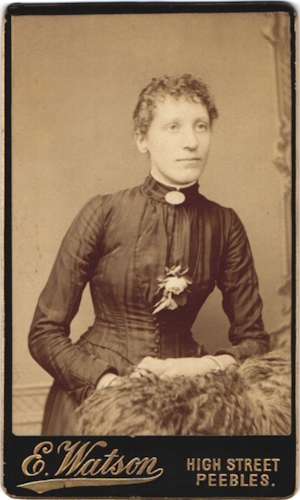
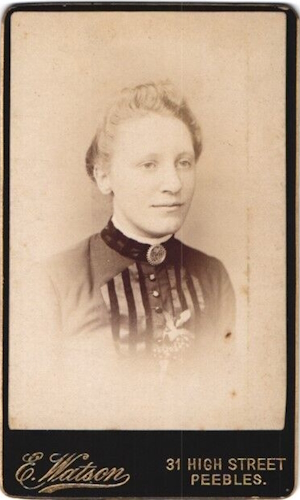
CDV Production Process
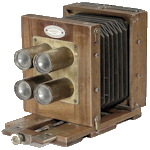
Preparation: A glass plate was coated with a light-sensitive collodion solution and then dipped in a silver nitrate solution to make it sensitive to light.
Exposure: The prepared plate was placed in a special camera that had multiple lenses (see above). These lenses could be uncovered either individually or all at once, allowing for several exposures on the same plate. This meant that multiple CsDV could be produced from a single photographic session.
Development: After exposure, the plate was developed in a darkroom. The wet collodion process required the plate to be developed while still wet, which meant photographers had to work quickly.
Printing: The developed glass plate served as a negative. Contact prints were made by placing the negative in contact with albumen paper (paper coated with egg white and salt, then sensitised with silver nitrate) under glass and exposing it to light. No enlarger was used for this process.
Mounting: The resulting prints were then cut apart and mounted onto cardstock, roughly the size of a traditional visiting card, which is how they got their name.
